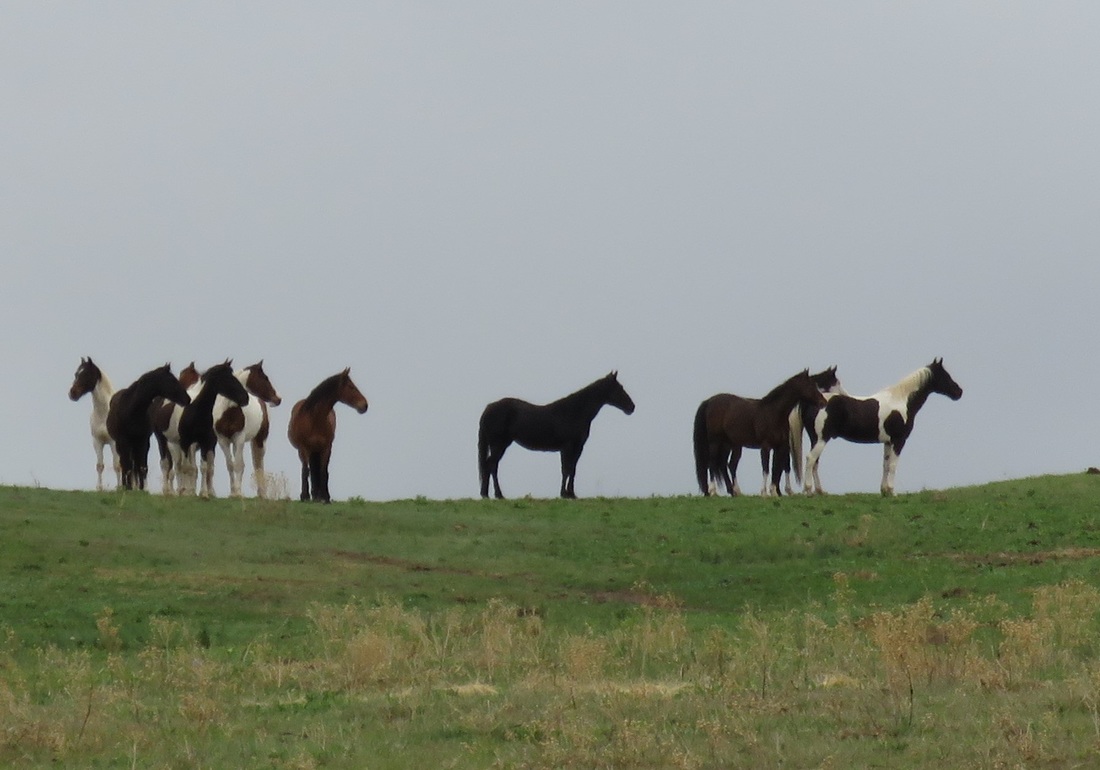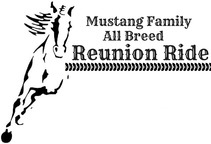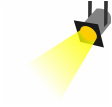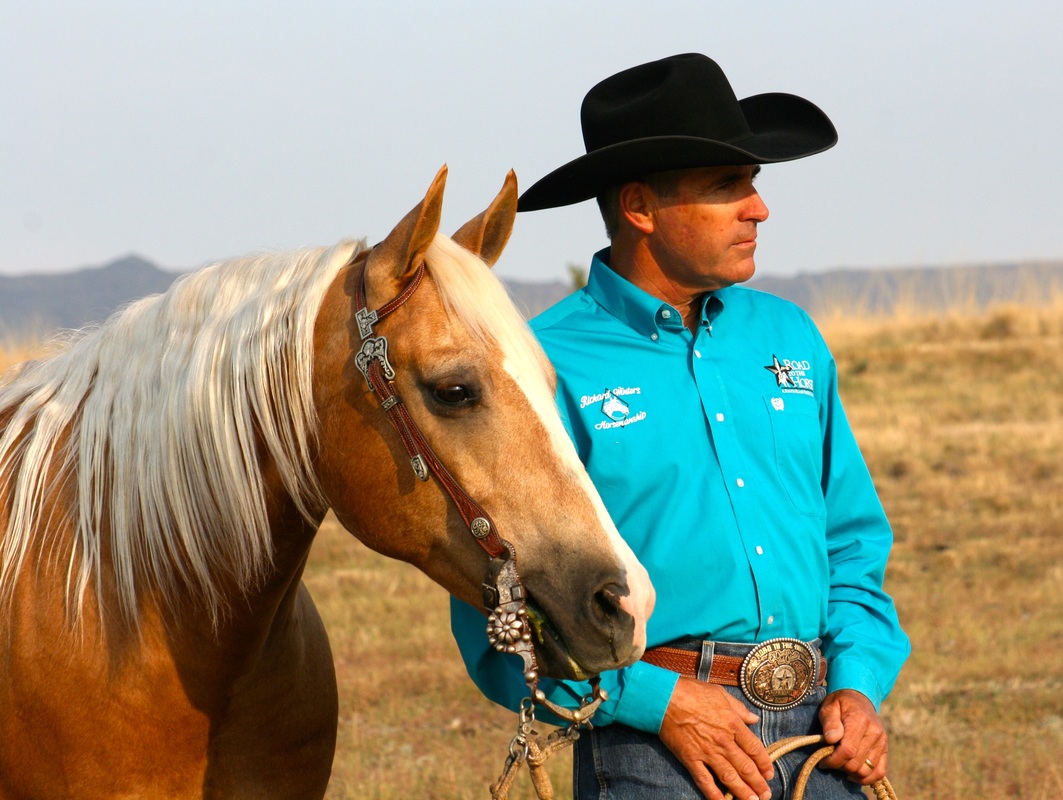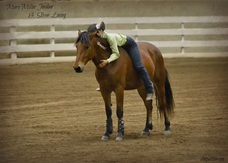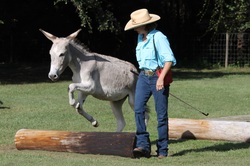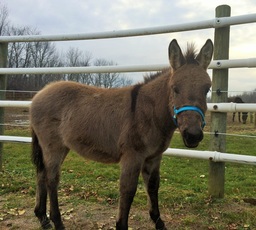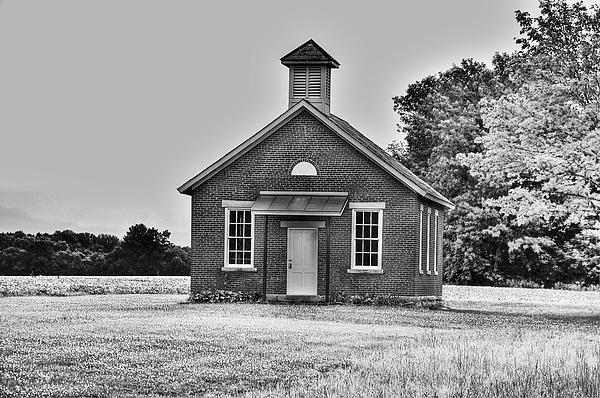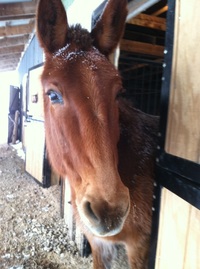TRAINER TIPS
|
|
This is the second in a three-part series (read the first article here) of articles written by Laura Scott Dawson, producer of the Mustang Family All Breed Reunion Ride, and enthusiastic proponent of mustangs. She has owned mustangs for over 20 years and currently enjoys eight uniquely individual mustangs on her Texas ranch. That number, as Laura says, is ALWAYS subject to change!
Mustangs vs. Domestics - Part 2: A LOOK INSIDE THE EQUINE MIND
by Laura Scott Dawson
In Part 1 of the Mustangs vs. Domestics article, published in our February 2016 issue, Laura Dawson showed us some of the physical characteristics that differentiate Mustangs from domestic horses. She has extensive experience with both kinds of equines, having bred and raised American Quarter Horses and American Paint Horses before wild mustangs entered her life. This month, Dawson takes a close look inside the minds of Mustangs and domestically-bred horses. Prepare yourself to become entranced as she leads us into the fascinating world of equine thoughts, instincts and behavior.
ALERT + AWARE = ALIVE + THRIVE
|
Differences in the minds and behaviors of mustangs versus domestic horses can be summed up in one word-A-W-A-R-E-N-E-S-S. Being aware of its surroundings and its herd is what has kept mustangs alive for hundreds of years. Domestic horses have had the luxury of relative safety and in some cases have even grown a little dulled to their environments. Time after time I have observed a new Mustang see and study things that weren’t even in my perception. The small wild animal hidden in the tall grass, a neighbor’s livestock several ranches over, a piece of paper caught in the weeds on the other side of the tank, will cause them to stop and give the “look”. The look isn’t about fear necessarily; it is a full concentration and study of the object or creature. If there was ever a time when you could quite literally see their “wheels turning” this would be it. I have one mustang whose greatest game is finding and pointing out hidden bow hunters when riding and hunting seasons overlap. And no, the hunters don’t find that too amusing. Over all, I truly enjoy the new perspective their far-reaching sight and awareness adds to my life.
A Mustang herd studies and processes their environment.
Instincts make a decided return to my Mustangs’ behavior when the stress level is up. For example, I think they are more protective of their young than domestics when they give birth. The mares tend to always see males as stud horses even after they have been gelded. All of them more closely watch each other for warning signs if one has sensed danger. When they are transported to a new competition or trail riding site, they tend to stick more closely to the herd - me and/or their travel companions. They are very stoic if injured. No need to call attention to a weakness in case predators might attack or higher-ups in the herd use it as an opportunity to move up the social ladder.
Mustangs are more herd savvy than domestics. They’ve had much more experience living in a herd environment than the majority of domestics. As a result they “get” the rules of a herd. Foals assume the social status of their mothers. They will be naturally weaned in that time and will learn how to approach other horses. Lesser horses eat and drink last. The stud is there to watch for danger and breed but a wise mare is in charge of day-to-day living. When all herd members understand the social rules there is much less strife. The rules can often be enforced with just a look or a pinned ear. I have witnessed many a new domestic join my herd and have to learn the rules repeatedly the “hard” way because they just don’t understand how to act in a group. Add a new Mustang to an existing herd of domestics and people will often say they “took over” the herd because they come in and set the rules to reflect all they learned in the wild. Mustang learning in their new domestic situation will be the final subject of this three part series. Please check back - in the April issue of the Wild Heart Mustangs™ e-zine when I delve into the trainability of Mustangs versus domestics.
|
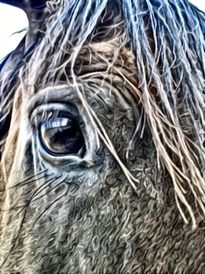
Lonestar Lawman has a soft eye that sees EVERYTHING!
Many people have theorized that this hyper sight of Mustangs causes them to be unpredictable and flighty, but I look at the trait in this way. My Mustangs are very intelligent; they not only see the object but are making decisions about the thing they see. Will it come closer? Have I seen it before? Does it pose a threat? Can I eat it? Can it eat me? Is it a concern at all? While they are doing this analysis they stand very still. Then, based on their initial thoughts, they are very curious or make moves to avoid it at all costs. Mustangs are very good at deciding and moving to the decision part of their analysis - if they didn’t do that well, they would constantly be running away from everything. That would leave no time for eating, procreation and resting! The majority of my mustangs, once gentled and trained, will then decide to move on to whatever task I have given them.

Wild Texas Rose protects her foal instinctively. Wild Mustangs setting the rules of the herd.
Purchase this print and prints of other wild horses at the Wild Heart Mustangs™ SHOP |
|
Registration Deadline is April 1, 2016
Event Dates: June 19 - 25, 2016 |
The Mustang Family All Breed Reunion Ride
The Mustang Family All Breed Reunion Ride is an all-inclusive week featuring 14 of the very best clinicians offering over 40 clinics. Any way you add it up equals the equine experience of a lifetime! In the February issue of the Wild Heart Mustangs™ e-zine, we brought you the concept behind this unique equine experience. Our March issue introduces you to some of the clinicians you'll have an opportunity to live and learn with at the June 2016 event. The event's featured clinicians are Ken McNabb, Richard Winters, Dan James and Susan Harris. They're supported by Marsha Hartford Sapp, Mark & Miranda Lyon, Lanny Leach, Cindy Brasfield, Steve Smith, Mary Miller Jordan, Chad & Christiana Wenger, Greg Robinson, Elisa Wallace and BJ & Maryanne Grimmett.
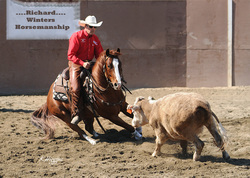
RICHARD WINTERS
For nearly three decades Richard has dedicated himself to honing his horsemanship skills and to passing this knowledge onto others. His vast experience includes starting literally hundreds of horses that have gone onto almost every equine discipline imaginable. Richard's credentials extend from the rodeo arena and high desert ranches of the west, to being a highly sought after trainer and horsemanship clinician. While at the Reunion Ride Richard will present four interesting and informative clinic sessions:
What were your first thoughts regarding owning and riding a Mustang? “Adopting your own Mustang would not be for everyone. Having proper facilities, plenty of time to dedicate to the project and the appropriate skill set are all prerequisites to a successful endeavor. Having judged many Mustang makeovers, I am continually impressed with how much can be accomplished in a short period of time if the aforementioned criteria are met.” Do you have a favorite Mustang? “Favorite might not be the best word. However I started a six-year-old gelding for the Bureau of Land Management years ago that taught me a lot. At the very beginning of the process when there was so much fear and self-preservation coming from this horse, I learned the importance of a proper balance of pressure and release. In my attempt to approach him the first time, he felt trapped. With no other alternative, he felt like he had to attack me! Coming after me with teeth bared and knocking me to the ground; I learned some important lessons about pressure and release.” Do you change your training plan in any way when working with a Mustang? “I think the biggest adjustment compared to domestic horses is the amount of time you need to invest at the very beginning to establish the trust and respect that a good gentle horse must have. Once a Mustang has let down his or her defense mechanisms and begins to trust, then real progress can begin and accelerate.” |
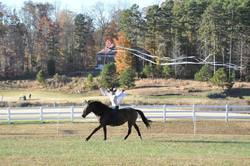
MARY MILLER JORDAN
Once you've met and worked with Mary Miller Jordan you'll understand how difficult it was to put her amazing energy, positivity and passion for horses and people into just a few words. Already an accomplished rider from youth on, she had her start with mustangs in 2010 with an entry into The Mustang Heritage Foundation’s Supreme Extreme Mustang Makeover. Her entry, a mustang named for her father-Lindsay’s Faith made the finals in that competition. The mare also later entered and won the title of America’s Favorite Trail Horse and was immortalized as a Breyer Horse model. Mary has also published a children’s book telling Lindsay’s story - Silver Mane. While at the Reunion Ride Mary will present four interesting and informative clinic sessions:
What were your first thoughts regarding owning and riding a Mustang? “I was thrilled at the thought of a 'clean slate' - but I later discovered that my first Mustang would be far from a clean slate. She was a 7 year old mare and she felt so 'knowing' right from the start.” Do you have a favorite Mustang? “Ha! That's like picking a favorite kid! I could not pick (smile emoticon) I am in love with each one for different reasons. They are each very unique.” Do you change your training plan in any way when working with a Mustang? “No, but I have changed my methods for training domestics because of what the Mustangs have taught me. Mustangs are just like a horse, only more so. <-- I love that saying!” |
|
Sweet Potato Goes to School in March!
Last month we introduced you to the Lainharts' mule, Sweet Potato (read the article here). Sweets is old enough for school now....check back in the April Issue of Wild Heart Mustangs to see how Sweets is doing at school. . |
Photo c. Wayne Hennebert
|
Proud of your special mustang, mule or donkey and want to share your photos and stories with us? We would love to have them! Go to our CONTACT page and email them to us! |


